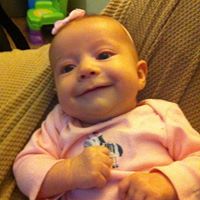Sharon M Trewin
age ~54
from Croton on Hudson, NY
Sharon Trewin Phones & Addresses
- 25 Mountain Trl, Croton Hdsn, NY 10520 • 914 471-2112
- Croton on Hudson, NY
- 19 Skyline Dr, Hawthorne, NY 10532
- 22 Anderson Ave, Tarrytown, NY 10591
- Sleepy Hollow, NY
- Yorktown Heights, NY
- Westchester, NY
- 25 Mountain Trl, Croton on Hudson, NY 10520
Us Patents
-
Method And System For Providing A Central Repository For Client-Specific Accessibility
view source -
US Patent:7062547, Jun 13, 2006
-
Filed:Sep 24, 2001
-
Appl. No.:09/961919
-
Inventors:Frances C Brown - Austin TX, US
Susan Crayne - Hartsdale NY, US
Samuel R. Detweiler - Austin TX, US
Peter Gustav Fairweather - Yorktown Heights NY, US
Vicki Lynne Hanson - Chappaqua NY, US
Richard Scott Schwerdtfeger - Round Rock TX, US
Beth Rush Tibbitts - Lexington KY, US
Sharon Mary Trewin - Sleepy Hollow NY, US -
Assignee:International Business Machines Corporation - Armonk NY
-
International Classification:G06F 15/177
G06F 15/16
G06F 17/00 -
US Classification:709221, 709246, 715865
-
Abstract:A method and system that provide a central repository for client specific accessibility applications to a user from an accessible server. The repository is updated on a periodic basis with new solutions provided by the service provider, who also manages licensing agreements between the user and the owner of the accessibility application. Accessibility programs, such as page magnification, screen readers, background changes, input modification, etc. , are downloaded into the client device being used by the user customer by clicking link buttons from a web page generated by the service provider's server. The accessibility programs downloaded are then resident on the client device until changed by the user. In a preferred embodiment, the service provider also provides a universal transcoding service to apply the user selected accessibility transformations to any type of client device used by the user.
-
Personalizing User Interfaces Across Operating Systems
view source -
US Patent:7089499, Aug 8, 2006
-
Filed:Feb 28, 2001
-
Appl. No.:09/794338
-
Inventors:Jennifer L. Steichen - Yorktown Heights NY, US
Sharon M. Trewin - Sleepy Hollow NY, US
Myung W. Kim - Elmsford NY, US -
Assignee:International Business Machines Corporation - Armonk NY
-
International Classification:G06F 3/00
G06F 17/00
G06E 1/00 -
US Classification:715744, 715707, 715748, 706 15, 706 46
-
Abstract:A user-centered interface agent learns user preferences and typical behaviors and, based on what is learned, predicts the user's preferred user interface for different types of host computers. The interface agent consists of a learning program which operates on the user's primary computer, a shadow program which is installed on a Personal Digital Assistant (PDA), and a remote program which operates on host computers. The PDA transfers data between the primary and remote machines, and can also be used as the user's primary computer. On the primary computer, the agent learns a user's preferences automatically by observing the user's actions, requiring minimal initialization by the user. The learning algorithm may be statistical, rule-based, case-based, neural network, or employ any other technique for reasoning under uncertainty. The automated personalizing of a user interface configuration has a particular advantage for individuals with disabilities who require configuration before they can use a new computer system.
-
System And Method For Automatic Control Device Personalization
view source -
US Patent:20040064597, Apr 1, 2004
-
Filed:Jan 14, 2003
-
Appl. No.:10/342002
-
Inventors:Sharon Trewin - Sleepy Hollow NY, US
-
Assignee:INTERNATIONAL BUSINESS MACHINES CORPORATION - Armonk NY
-
International Classification:G09G005/00
G05B013/02
G06F003/00
G05B015/00 -
US Classification:710/008000, 700/001000, 345/865000, 345/156000
-
Abstract:A system and method for improving the usability of electronic products. Control devices such as keyboards, mice, and switches, for example, are often accompanied by software which allows users to configure the device response to suit their physical abilities, situation and task. The system and method enables automatic configuration of such control devices in real time to match the user's requirements and enables users to achieve accurate control. The system includes a device for monitoring user activity and determining an appropriate device configuration from user activity sequences with that device, and a configurer that implements the appropriate configuration determined by the algorithm. The method further includes optional steps for identifying when a user with different configuration requirements starts to use a device, and for resetting the state of an inference algorithm when such changes are detected. This allows rapid configuration in environments where many individuals may use the same device.
-
Providing Real-Time Audience Awareness To Speaker
view source -
US Patent:20200244380, Jul 30, 2020
-
Filed:Jan 24, 2019
-
Appl. No.:16/256241
-
Inventors:- Armonk NY, US
Ruchi Mahindru - Elmsford NY, US
Karin Murthy - Danbury CT, US
Sharon M. Trewin - Croton-on-Hudson NY, US -
International Classification:H04H 60/33
G06F 3/0482
G06F 9/54
G10L 15/00
G06F 9/451 -
Abstract:Providing real-time awareness of an audience to a presenter during the presentation. In response to presenting a presentation to an audience, information is automatically collected about the audience from sensors positioned amongst the audience. The collected information about the audience is analyzed and, during the presentation, recommendations are made to the presenter for improving the presentation based on the collected information.
-
Resource Exploitation Management System, Method And Program Product
view source -
US Patent:20200233851, Jul 23, 2020
-
Filed:Jan 17, 2019
-
Appl. No.:16/250581
-
Inventors:- Madrid, ES
- Armonk NY, US
Giorgio De Paola - Madrid, ES
Ruben Rodriguez Torrado - Madrid, ES
Akiko Suzuki - Tokyo, JP
Mustafa Canim - Ossining NY, US
Yuan-Chi Chang - Armonk NY, US
Robert Farrell - Cornwall NY, US
Sharon M. Trewin - Croton-on-Hudson NY, US -
Assignee:REPSOL, S. A. - Madrid
International Business Machines Corporation - Armonk NY -
International Classification:G06F 16/23
G06F 16/2457
G06F 16/2455
G06F 7/14 -
Abstract:A resource exploitation management system, method and a computer program product therefor. A description of new geological evidence for a geological resource is received, e.g., as one or more triples describing the evidence. Keywords in the description are matched against keywords in representations in a geological resource database. Geological relations are inferred from the descriptions and matched against predefined geological relations from the geological resource database. Consistent triple matches are merged with the geological resource database. The confidence level for merged matches is updated in the geological resource database.
-
Adapting A Display Of Interface Elements On A Touch-Based Device To Improve Visibility
view source -
US Patent:20200218335, Jul 9, 2020
-
Filed:Jan 9, 2019
-
Appl. No.:16/243364
-
Inventors:- Armonk NY, US
Sharon Mary Trewin - YORKTOWN HEIGHTS NY, US -
International Classification:G06F 3/01
G06F 3/0484
G06F 3/16
G06F 3/0488 -
Abstract:A display adaption method, system, and computer program product include determining an obscured area of an interface of a screen that is obscured by a user, learning a pattern of the obscured area of the screen that is obscured over a time frame, and adapting the interface of the screen to change the interface of the screen to change an interference by the user with the interface of the screen such that the obscured area is reduced.
-
Semantic Concept Discovery Over Event Databases
view source -
US Patent:20200117738, Apr 16, 2020
-
Filed:Oct 11, 2018
-
Appl. No.:16/157304
-
Inventors:- Armonk NY, US
Sharon Mary Trewin - Yorktown Heights NY, US
Alfio Massimiliano Gliozzo - New York NY, US -
International Classification:G06F 17/30
G06K 9/46
G06F 17/27 -
Abstract:A concept discovery method, system, and computer program product include preparing a concept index for concepts built over a set of input data having input terms, building a vector representation of the concepts in the input data, receiving a set of query terms as an additional input, mapping the set of query terms to the concepts in the concept index, calculating at least one of a co-occurrence score for each of the concepts in the concept index by measuring their frequency of co-occurrence with the input terms' concepts and a similarity score for each of the concepts in the concept index by measuring the similarity of their vector representations according to a vector similarity measure, and ranking the concepts with respect to their relevance to the input terms by the at least one of the co-occurrence score and the similarity score.
-
Automatic Extraction Of Domain Specific Terminology From A Large Corpus
view source -
US Patent:20190236206, Aug 1, 2019
-
Filed:Jan 26, 2018
-
Appl. No.:15/881521
-
Inventors:- Armonk NY, US
Sharon M. Trewin - Croton-on-Hudson NY, US -
International Classification:G06F 17/30
G06F 17/27 -
Abstract:A method of extracting jargon from a document corpus stored in a database using a processor and a user interface is described herein. A sub-domain input is entered through the user interface to initiate a review of the document corpus stored in the database. The processor separates the document corpus into at least one sub-corpus and a remainder corpus. The at least one sub-corpus is defined by the sub-domain input. A first topic model and a second topic model are built to generate respective topic similarity scores for at least one term extracted from the at least one sub-corpus and at least one corresponding term extracted from the remainder corpus. The respective topic similarity scores are compared by the processor to identify jargon terms and thereby provide a list of j argon terms through the user interface.
Resumes

Sharon Trewin
view sourceMylife

Shasta Trewin Bella Vist...
view sourceSharon Trewin Sharon Trewin Sharon Trewin Scott Trewin Scott Trewin
Classmates

Shar Trewin Saint Joseph...
view sourceSharon Trewin 1959 graduate of Saint Joseph Community School in New hampton, IA is on Memory Lane. Get caught up with Sharon and other high school alumni

Shar Fain (Trewin)
view sourcePlease enter valid first name and last name Sharon Fain (Trewin) Edmonds High School Edmonds, WA
Youtube

Sharon Trewin
view source
Sharon Trewin
view source
Sharon Trewin
view sourceGet Report for Sharon M Trewin from Croton on Hudson, NY, age ~54




